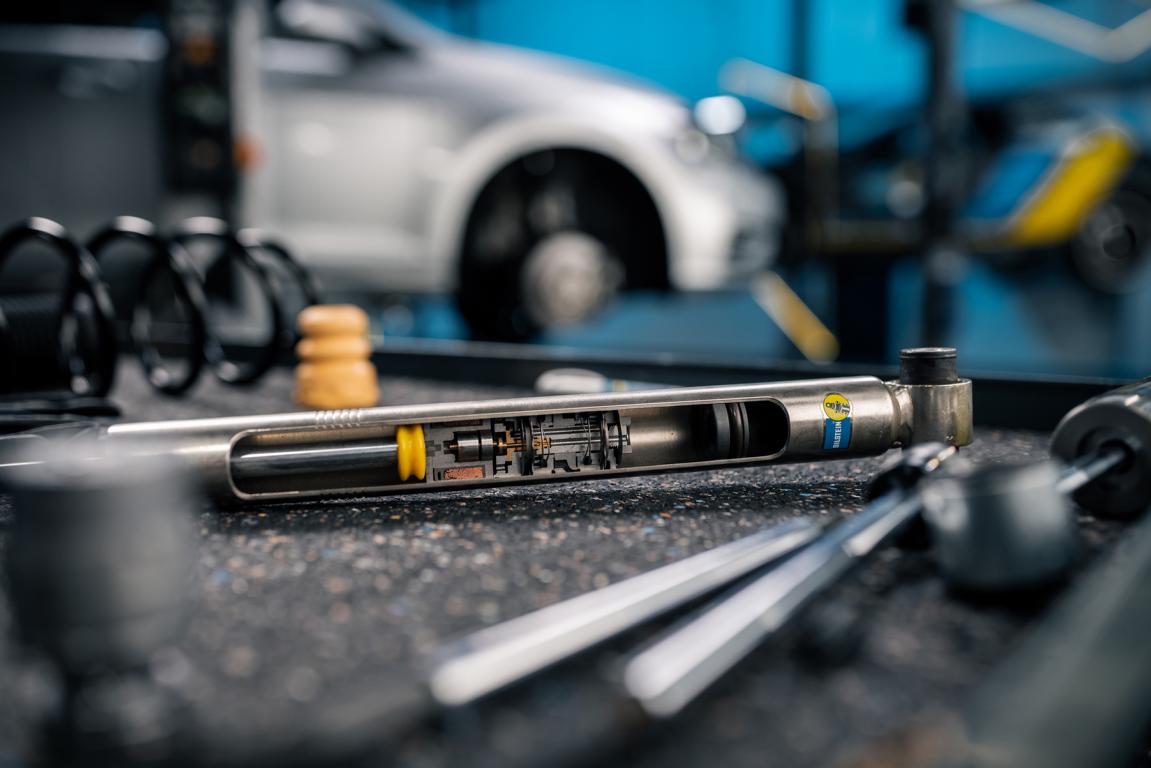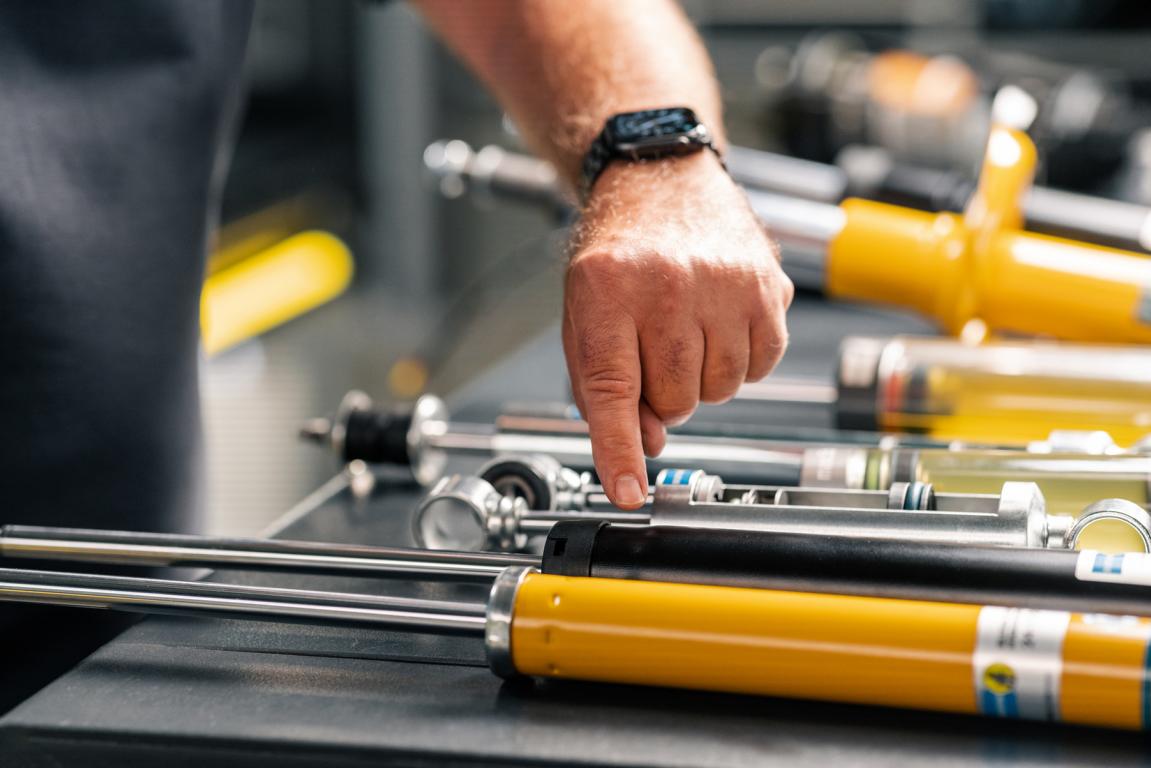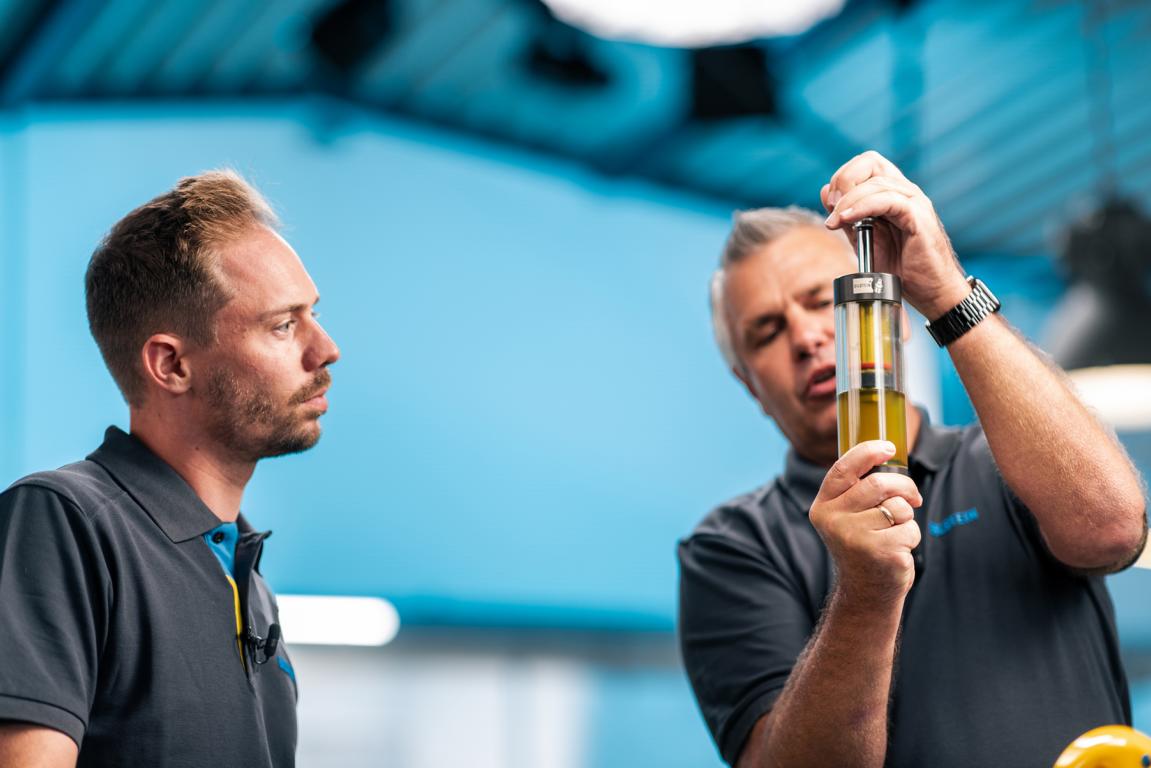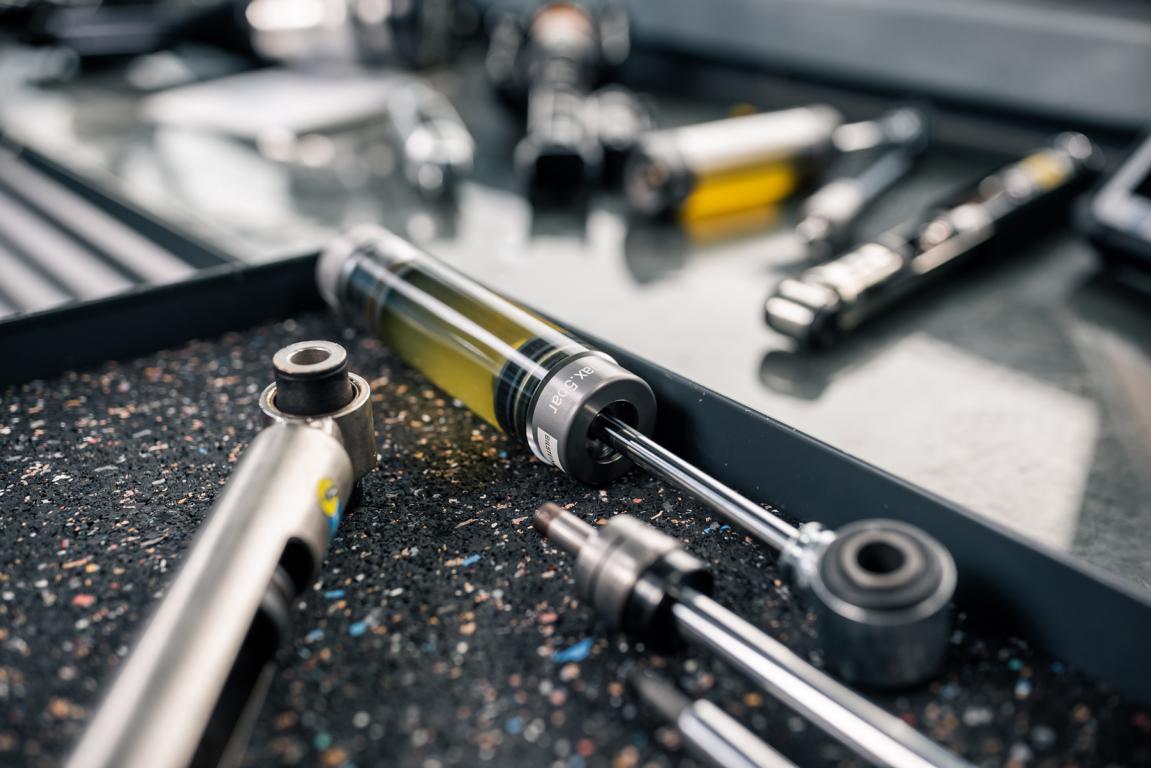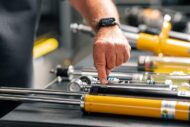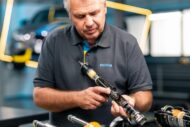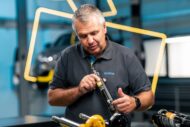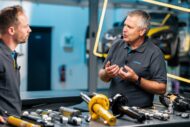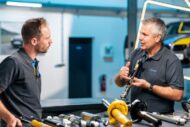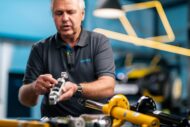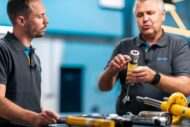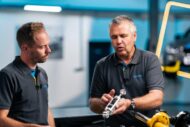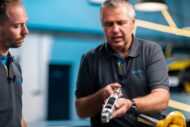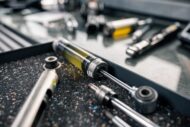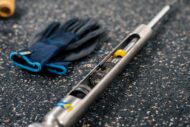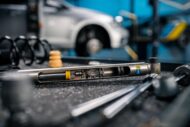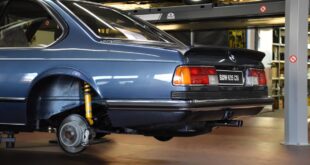Not all shock absorbers are the same – a fact that is particularly true when it comes to problems with the chassis. Monotube shock absorbers, twin-tube shock absorbers and electronic systems: different designs require different approaches to fault analysis in the workshop. One who knows her is Rainer Popiol. The Head of BILSTEIN Academy reveals what mechanics need to look out for - and why certain dampers become harder when oil leaks out. All information on this can be found in the following text or in the fifth part of the video series "Compact chassis - powered by BILSTEIN Academy":
If there are problems with the shock absorbers, mechanics should first be aware of the system they are dealing with in order to quickly and safely track down the source of the problem. “Most shock absorbers look the same from the outside. But there are fundamental differences and functional principles,” explains expert Rainer Popiol.
Monotube shock absorber
In the mono-tube shock absorber, the working piston works in a tube, the working chamber filled with oil and the piston chamber are located between the sealing assembly and a separating piston. The oil is pushed back and forth from the piston chamber through the valve (spring washer assembly) in the working chamber, which creates the necessary damping forces for compression and rebound. The gas space is located behind the separating piston. This gas has two tasks, as Rainer Popiol reveals: “One task is to compress the oil column so that no bubbles form – this is known as cavitation. As a result, the monotube shock absorber remains stable. In addition, the gas space must accommodate the volume of the piston rod, because when the shock absorber works, the piston rod is pushed into the working space. The separating piston moves accordingly.”
Twin-tube shock absorber
In the twin-tube shock absorber, too, the working piston works in a working chamber filled with oil. When the piston rod is pushed into the shock absorber, the oil is displaced and pushed down through the base valve into the expansion chamber located between tube one and tube two. "Unlike the mono-tube shock absorber, the twin-tube shock absorber does not work in any position," says Rainer Popiol. “If the shock absorber is inclined more than 45 degrees, it pulls the gas into the inner tube due to the inclined position. Then the gas pressure shock absorber no longer works positively.”
Troubleshooting shock absorbers is not always easy
Whether mono-tube or twin-tube shock absorbers: When it comes to error analysis, there are a few things that mechanics need to consider. Rainer Popiol: "It's usually like this: if the shock absorber loses oil, it becomes softer. But there is a design where the shock absorber is tighter. This means that the piston rod no longer moves properly into the shock absorber. This is the monotube shock absorber. If the loses oil, the separating piston goes up towards the working space. And then at some point the piston rod touches the floating piston and that makes a loud knocking noise and the car gets harder.”
Whether you are dealing with a mono-tube or a twin-tube shock absorber is not always obvious at first glance, even for automotive professionals. "Shock absorbers with a tapered tube are usually twin-tube shock absorbers because there is another tube inside," says Rainer Popiol. "The monotube shock absorber is always cylindrical in design because the working piston moves through the entire tube."
Special challenge: mono-tube shock absorbers in upside-down design
MacPherson struts are usually used on the front axle. Stable piston rods with a larger diameter are used because they assume wheel control tasks and therefore have to absorb large forces. For this reason, mono-tube shock absorbers in an upside-down design are often used, as Rainer Popiol explains: “Then the shock absorber is completely reversed. The piston rod is no longer at the top but at the bottom. Two plain bearings then take over the guidance so that the high forces can be transmitted.” The particular challenge in troubleshooting in the workshop: “With the monotube shock absorber, no oil can escape at the top because the piston rod is at the bottom.”
That is why it is so important for mechanics in the car workshop to make sure what kind of system they are dealing with. "In our technical support, we are often confronted with the assumption that a kind of emulsion is leaking from the twin-tube shock absorber, which is due to an oil leak. Most of the time it's just leaked fat, which is normal. Because with the upside-down twin-tube shock absorber, we lubricate the plain bearings on the tube with grease.
Electronic shock absorber systems
Electronic systems can usually be identified by their wiring and externally mounted valves. Rainer Popiol: "With these active or semi-active systems, I check the electronics with my diagnostic tools, go through the error memory and look at the whole thing. I check whether something is wrong with the cable, whether the cable is broken or the contact resistance is too high, etc.” However, considering the electronics is only part of the error analysis, Rainer Popiol warns: “Of course, this is not 100 percent Test. And I can't check wear at all: If the electronics are OK, but the handling is still bad, then it's quite possible that we're dealing with normal wear and tear. And then I have to check in the same way as with the passive systems.”
The following note is essential: For safety reasons, tuningblog recommends all repair, inspection and maintenance work exclusively to be carried out in a specialist workshop! Although our information is summarized to the best of our knowledge and belief, we cannot assume any liability for the content. All information is therefore "without guarantee".
Of course, that wasn't the end of it!
In this tuningblog category there are guides and instructions for common defects/repairs on the vehicle and for installing accessories/tuning parts. Our articles explain in a simple way common defects and the corresponding repairs and they also explain how the first signs of a defect become noticeable. In most cases, we also have initial clues to the repair instructions in our repair instructions approximate costs listed. The goal of ourAuto Repair Guide“ is to create a head start in knowledge for the next visit to the workshop with initial tips. This may save you from tedious troubleshooting and you may even be able to do small things yourself. The same applies, of course, to the installation of accessories/tuning parts. Here, too, we would like to help with the implementation with instructions and tips. There are many other posts on this as well. Below is an excerpt of the last and HERE there are all previous instructions.
other related posts
|
This is how sporty car owners find the perfect complete chassis! |
 tuningblog.eu Your magazine about tuning the car
tuningblog.eu Your magazine about tuning the car
